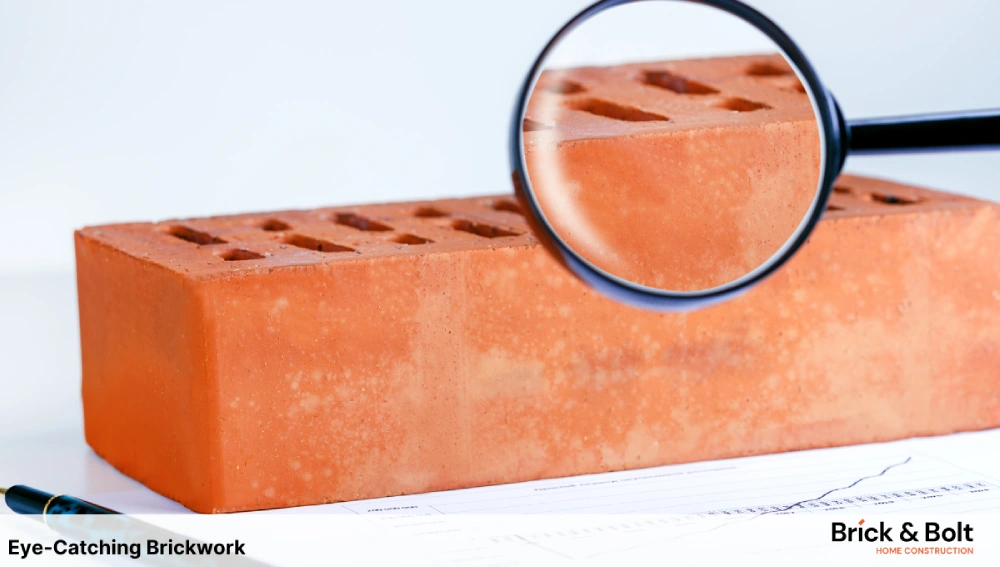Quality bricks are the base of any strong and durable structure. Good quality bricks provide stability, longevity, and safety to your construction. Whether for a new home, commercial building, or any other kind of construction venture, high-quality bricks should be used. But how can you determine that the bricks you have are up to the standard? In this article, we are definitely going to discuss a lot of methods and tests that would be done with bricks so that one can judge the quality of the same, enabling one to make the right decisions so that one’s construction works are made to last for generations.
In this article, we will look at different steps to check the quality of bricks.
Easy Ways to Check Brick Quality
There are two core ways through which you can test the quality of the bricks you intend to employ in your construction projects:
- Visual inspection
- Simple testing
Visual Inspection
It is a straightforward method often used to assess the quality of bricks based on their outward appearance. It tests the bricks’ size, shape, color, and hardness.
Here’s the checklist you need to consider during this process:
i) Check for uniform size and shape:
The bricks should be the same size and very similar in length, width, and height. Generally, 190 mm x 90 mm x 90 mm is regarded as the standard size of bricks, and for construction purposes, 200 mm x 100 mm x 100 mm is recommended.
ii) Look for sharp edges and smooth surfaces:
Good bricks should have neat edges and a plain face. They should not have cracks, roughness, or any kind of extrusion.
iii) Ensure there are no cracks or chips:
You need to examine each brick’s face carefully. Use your fingers to feel for cracks, chips, or fractures. Avoid bricks with powdery or flaky surfaces as they may suggest poor product quality or inadequate curing.
iv) Look for consistent colour and density:
These should also be smooth in texture without cracks, rough surfaces, or blotchy spots, and the colors should be constant throughout.
Another important feature is that the density of the bricks should not differ much.
Simple Testing
In addition to visual inspection, simple tests can be performed to assess the quality of bricks further. This includes:
- Tap test
- Drop test
- Crack test
- Water absorption test
Tap Test
Gently tap with a hammer:
Take a brick, clasp it with your hands, and hit it with a hammer or metal figure. A good-quality brick will produce a clear, ringing sound.
A dull thud indicates a weak or damaged brick that may be worn, demolished, or have an extremely porous surface.
Drop Test
Dropping the brick from a height of about one meter:
Place a brick in front of you at the level of your shoulders, then drop it onto a smooth concrete floor or a metal plate.
A high-quality brick should not break or crack upon impact. It should ideally withstand the Blow Plate Test without breaking or developing cracks.
If the brick has been impacted somehow and has shattered into pieces or cracks, this is due to poor quality or some inner flaw.
Crack Test
Check for any visible cracks or fissures:
Run the fingers along the face of the brick and around its perimeter for splitting or crazing.
Cracks can weaken a brick’s structural integrity. Bricks with multiple or excessive cracks should be eliminated, as they can barely meet the desired standard.
Water Absorption Test
Take the brick and measure its dry weight on an abacus or any weighing scale you have. Next, immerse the brick in water for 24 hours.
Measure the weight gain after soaking. In this case, let the brick rest in the air for 24 hours, blot the surface of the brick that came in contact with the water, and weigh the brick again.
A lower percentage of water absorption indicates higher quality because it indicates a denser structure and less porosity.
Which is a Better Option to Check Brick Quality?

Many methods can be employed to ensure the quality of bricks for your construction project. Each method has its advantages and provides different insights into the brick’s properties. Preferably, visual inspection, hardness test, water absorption test, and Efflorescence test, which check the presence of soluble salt, are some of the better options for checking brick quality.
Standard Guideline for Compressive Strength Test of Bricks
As per IS 3495-1 (1992) for Indian Standards, the minimum compressive strength of individual bricks should be 3.5 N/mm².
According to ASTM C67, brick strength varies based on type and use, typically ranging from 15-30 MPa (2175-4350 psi).
Conclusion
For brick quality, more than individual tests, a combination of these methods can provide the best brick for home construction. However, if you need to choose one method, the Compressive Strength Test is often considered the most reliable for ensuring structural integrity. It provides quantifiable data on the brick’s strength, which is crucial for construction projects.
Despite being destructive and requiring special equipment, the insights gained from this test make it the superior option for checking brick quality. If immediate and surface-level inspection is needed, Visual Inspection combined with a Hardness test can give you quick and effective results.
FAQs
What is the best quality of brick?
The best bricks are the same size and shape. They are smooth and make a clear sound when tapped. They do not break easily, have few cracks, and soak up little water. They should also meet the required standards for strength, durability, and weather resistance.
How do you identify brick type?
Bricks can be classified into types depending on their material, colour, finish, and method of manufacture. Some types include clay bricks, concrete bricks, and even fly ash bricks.
What are poor-quality bricks called?Poor bricks are called ‘rejects’ or ‘bad quality bricks.’ They may be the wrong shape and size, have cracks, absorb more water, have weak structures, and have an uneven surface. These problems make them unfit for construction.

